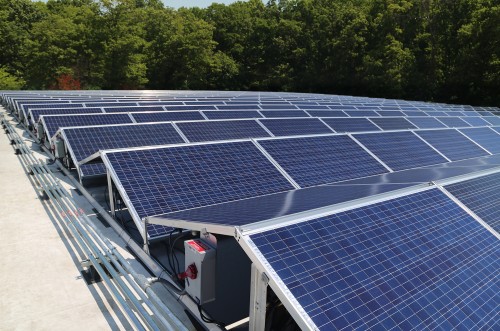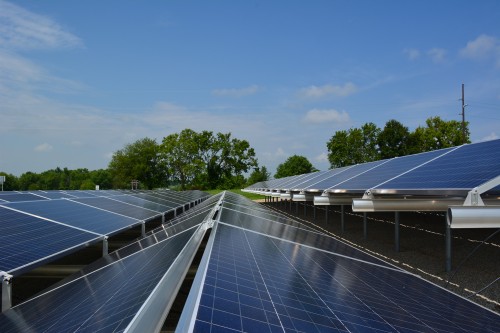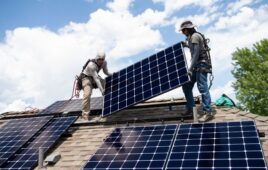As much as the industry is trying to move to standardized, out-of-the-box installations, still no two systems are the same. And that is especially true for the few east-west or dual-tilt systems out there. Focusing just on tilt angles, Mounting System’s Lambda Light EW+ system can be positioned at either 10° or 15°, and SolarCity’s ZS Peak system is locked-in at 8°. Ten K Solar’s DUO system has a completely different layout, positioning one panel at 25° and the other at 16°.
 While DUO is visually different from other systems, installation is simple to grasp, said Julian White, director of marketing and product strategy at Ten K Solar. DUO is an entire solution—the module, inverter kit and racking are all Ten K’s and deliver to the site together.
While DUO is visually different from other systems, installation is simple to grasp, said Julian White, director of marketing and product strategy at Ten K Solar. DUO is an entire solution—the module, inverter kit and racking are all Ten K’s and deliver to the site together.
“The [installation] process is the same process [installers] are used to today. It’s a very flexible system,” White said. “The first thing to think about is that we think in terms of wavelets—two modules linked together in that tent or wave structure. Once you understand the dimensions of the wavelet, which includes walkways and aisles, it’s just how many can you fit?”
The basic process is to mark the array perimeters, lay out the rails and then land two modules at a time into rows. The inverters install under the wavelets on the perimeter of the array. Everything gets wired up and connected, and the install is complete.
Ten K’s Titan module is a larger size (equivalent to a 96-cell module) and comes with frame extensions to easily fit with the unique wavelet rack.
“Most racking systems mount each module independent of the other. They need hardware to support the module at both the bottom and the top,” White said. “Because we control the full module and we make the rack, much of our racking is integrated into the module. We only need one set of racking for every two modules. The modules support each other at the peak of the wavelet.”
 Having two panels tilted at different angles creates some shading, especially when positioned as closely as DUO allows. But Ten K’s panel design takes all disturbances into account. Using a parallel matrix, each cell is wired to its north-south and east-west neighboring cells. Electricity can travel down multiple paths.
Having two panels tilted at different angles creates some shading, especially when positioned as closely as DUO allows. But Ten K’s panel design takes all disturbances into account. Using a parallel matrix, each cell is wired to its north-south and east-west neighboring cells. Electricity can travel down multiple paths.
“If I have shading, non-uniform irradiance, soiling, failure of a single cell or a single connection, my whole module doesn’t go down, I don’t get a hotspot or activate a diode,” White said. “That guy just goes dead and everybody else can send their electricity around different pathways.”
To support the parallel architecture, Ten K uses power electronics, making its modules “smart.” Having that added optimization also contributes to less worries about shading.
“We’re not as scared of shading; in fact, we get really aggressive about shading,” White said. “We’ve increased the tilt and we actively self-shade just a little between the rows. We can do that because all we lose when we shade is what’s shaded. It’s a one-for-one loss.”
In general, Ten K claims its DUO system provides 30 to 40% more watts and 37% more kilowatt hours than a traditional south-facing 10° system.
“Instead of thinking, ‘How do we make sure every panel isn’t shaded?’ when we look at a roof, we simply say, ‘How do we make sure we get the most solar up on the roof, covering as much area as possible and get as many kilowatt hours possible off a roof?’” White said. “We’re really thinking about maximum kilowatt hours out of a fixed space as opposed to maximum modules or maximum unshaded modules.”





Where can the colored reflector panels be purchased (used on Ten K systems)
Ten K has since gone out of business, and I do not know if their technology is now used elsewhere.